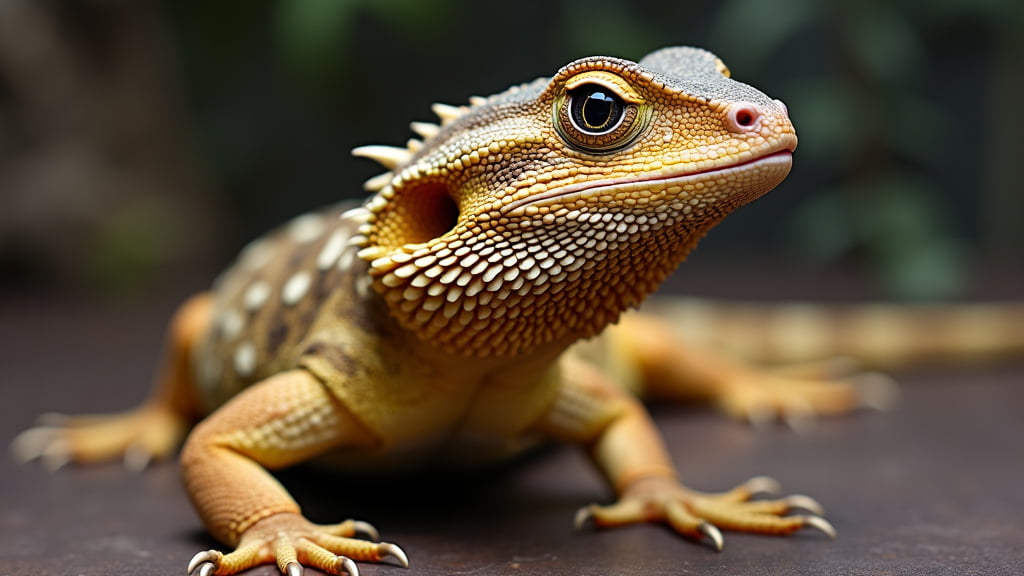Bearded Dragons, with their captivating personalities and manageable care requirements, are extraordinary pets. Among the various morphs, Silkback Bearded Dragons stand out due to their unique appearance and characteristics. This blog post delves into the fascinating world of Silkback Bearded Dragons, offering practical advice, expert insights, and in-depth analysis that any bearded dragon aficionado will find valuable.
What is a Silkback Bearded Dragon?
The Silkback Morph Explained
Silkback Bearded Dragons, known for their smooth, scaleless skin, are a captivating variation of the classic bearded dragon. The unique morphology results from breeding two leatherback dragons together, which ultimately eliminates the traditional scales found on their cousins. The term ‘silkback’ alludes to their silky, smooth skin, making them a rare and intriguing addition to any reptile collection.
Appearance and Traits
Silkbacks are easily distinguishable by their soft, scale-free skin, which often makes their colours more vivid and pronounced. Due to the lack of scales, their skin is more delicate and requires additional care to keep them healthy. Their fragility, however, should not deter you; with the right knowledge and commitment, caring for a silkback can be an enriching experience.
Caring for Your Silkback Bearded Dragon
Habitat Requirements
When setting up a habitat for your silkback bearded dragon, consider the following elements:
Tank Size
A minimum of a 40-gallon (150-litre) tank is necessary for a single adult silkback. Ample space allows your dragon to move around comfortably, helping them exhibit natural behaviours.
Temperature and Lighting
Proper temperature and lighting are crucial for silkbacks:
- Basking Spot: Maintain a temperature of around 38°C (100°F).
- Cool Side: Keep it around 24°C (75°F).
- UVB Lighting: Essential for calcium absorption and bone health, ensure the light source covers the majority of the tank.
Diet and Nutrition
Silkback bearded dragons have dietary needs similar to their scaled counterparts but with some minor adjustments for their delicate skin.
Staple Foods
- Insects: Crickets, roaches, and mealworms are excellent protein sources.
- Vegetables: Mustard greens, collard greens, and dandelion greens should constitute a significant portion of their diet.
- Fruits: Offer sparingly as treats; strawberries, blueberries, and mangos are good options.
Special Considerations for Skin Care
Due to their scaleless nature, silkbacks are prone to skin issues. Here’s how you can help:
Humidity
Maintain humidity levels between 20-40%. Overly humid environments can lead to skin infections, whereas excessively dry conditions can cause shedding problems.
Hydration
Regular misting and providing a shallow water dish can help keep their skin hydrated without raising the humidity too much.
Shedding
Silkbacks might face more significant shedding challenges compared to their scaled counterparts. Assist by providing weekly baths and using shedding aids if necessary.
Health and Well-being
Common Health Issues
While Silkback Bearded Dragons are generally robust, there are some health issues to be aware of:
Skin Infections
Their skin’s delicacy makes them susceptible to infections. Preventing skin infections involves maintaining a clean habitat and monitoring humidity levels. Any signs of infection, such as discolouration or unusual shedding, should prompt an immediate visit to a vet.
Nutritional Deficiencies
Ensure a balanced diet rich in calcium and vitamins. Supplement their diet with calcium powder and multivitamins to prevent metabolic bone disease (MBD) and other deficiencies.
Regular Check-ups
Regular veterinary check-ups are crucial to ensure your dragon remains in good health. An experienced herpetologist can provide invaluable insights and detect early signs of potential issues.
Conclusion
Silkback Bearded Dragons, with their unique appearance and specific care requirements, offer a rewarding experience for dedicated reptile enthusiasts. By understanding their needs and providing a well-maintained habitat, adequate nutrition, and special skin care, you can enjoy the company of these fascinating creatures for many years. Always consult a reputable vet for any health concerns and stay informed about best practices for their care.
Stay tuned to our blog for more expert insights and tips on caring for your exotic pets!
Meta Description: Dive into the world of Silkback Bearded Dragons. Discover expert care tips, habitat requirements, and health considerations for these unique, scaleless reptiles. Optimised for SEO, this comprehensive guide is perfect for all bearded dragon enthusiasts.
Internal Link: For more details on other bearded dragon morphs, check out our comprehensive guide to bearded dragon varieties.
External Link: Want to learn more about reptile veterinary care? Visit the British Veterinary Association.
By following these guidelines and leveraging expert insights, you’re well on your way to becoming an adept Silkback Bearded Dragon owner. Enjoy the journey—it’s as unique and rewarding as the dragons themselves!

